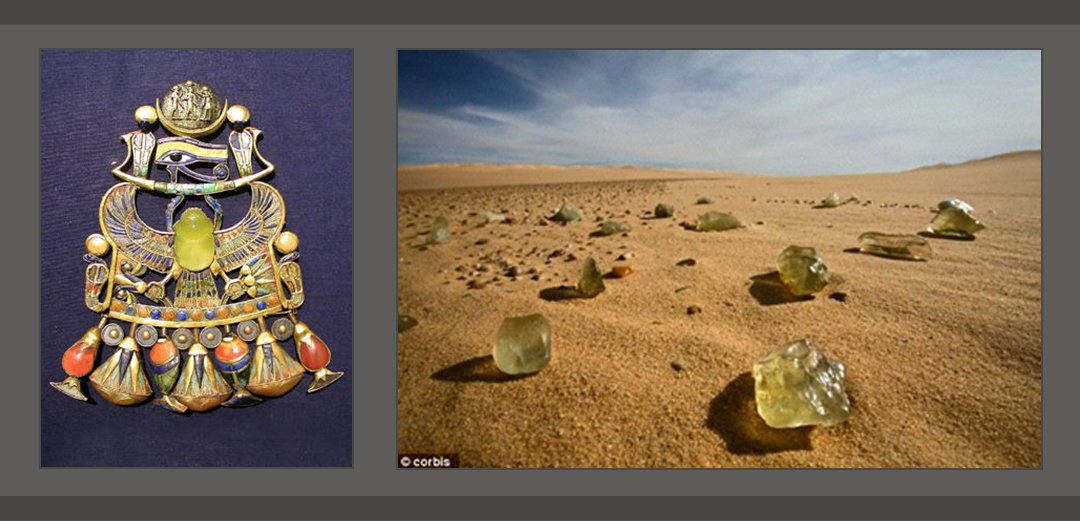The first evidence of a comet impact on Earth has been found in a mysterious black Egyptian pebble filled with diamonds.
The comet is thought to have struck Earth 28 million years ago, heating the sands of the Sahara desert to 2,000°C.
It created huge amount of yellow silica glass also known as Libyan Desert glass, which today lie scattered over a 6,000 square kilometer area in the Sahara.
A magnificent specimen of the glass, polished by ancient jewelers, is found in Tutankhamun's brooch with its striking yellow-brown scarab.
The discovery reported in Earth and Planetary Science Letters could even help researchers unlock the secrets of the formation of our solar system. Comets always visit our skies – they’re these dirty snowballs of ice mixed with dust – but never before in history has material from a comet ever been found on Earth. As well as the glass, the impact produced microscopic diamonds. Evidence of this can be found in a small, black, diamond-bearing pebble found years earlier by an Egyptian geologist.
After conducting chemical analyses on the pebble, the authors came to the conclusion that it represented the very first known specimen of a comet nucleus, rather than an unusual type of meteorite.
Understanding how a comet impact affects planets, could help scientists solve some of the mysteries surrounding our solar system.
Comet material is very elusive. Fragments have never been found on Earth before except as microscopic sized dust particles in the upper atmosphere and some carbon-rich dust in the Antarctic ice.
Nasa and Esa spend billions of dollars collecting a few micrograms of comet material and bringing it back to Earth, and now we’ve got a radical new approach of studying this material, without spending billions of dollars collecting.
The team has named the diamond-bearing pebble ‘Hypatia’ after the first well-known female mathematician, astronomer and philosopher, Hypatia of Alexandria.
The study of Hypatia has grown into an international collaborative research program with several expeditions already underway in the desert glass area.
TUTANKHAMUN'S BROOCH
Tutankhamun's impeccably preserved brooch was recovered along with the numerous other artifacts within his tomb in 1922. The striking yellow-brown scarab that is set at its heart is made of a yellow silica glass stone procured from the sands of the Sahara.
(More details on Mail online, )









